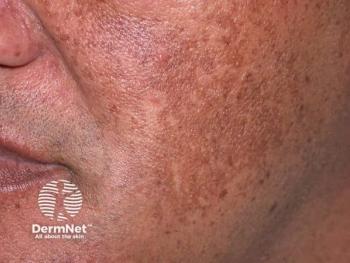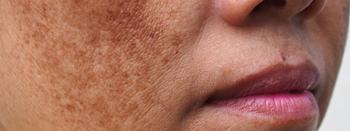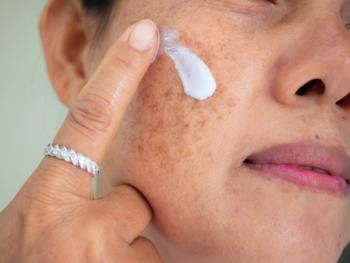
730 nm picosecond laser safe, effective for benign pigmented lesions
Lasers typically used for tattoo removal are on the rise as a possible treatment for melasma, with the novel 730 nm picosecond laser (PicoWay, Candela) being the most recently studied device which showed to be safe and effective for treating benign pigmented lesions.
A laser typically used for tattoo removal appears to be a safe and effective option for treating benign pigmented lesions, according to a study published Sept. 1 in
In a study of 22 patients, researchers found treating benign pigmented lesions with the novel 730 nm picosecond titanium sapphire laser (PicoWay, Candela) was promising.
“This is the first study analyzing the safety and efficacy of a novel 730 nm 250 [picosecond] titanium sapphire laser for the treatment of benign pigmented lesions,” the authors wrote. “The data demonstrates that this laser has the potential to deliver significant cosmetic benefit in treating discrete pigmented lesions, is well-tolerated and can achieve significant results in a small number of treatment sessions.”
Dermatologists in California did a retrospective review of patients presenting from December 2019 to March 2020 at a single institution with benign pigmented lesions for treatment with the 730 nm picosecond laser. The 22 patients, of all Fitzpatrick skin types, had not been treated in the previous three months with a pigment-specific laser.
The authors treated patients with a 730 nm picosecond titanium sapphire laser, which is a separate handpiece that clinicians can attach to the base of an Nd:Yag laser platform. The device has a maximum energy of 100 mJ, 250 second pulse duration, spot sizes from 2 to 4 mm, 1 to 10 Hz repetition rates and adjustable fluence, according to the paper.1
Two blinded dermatologists did absolute and relative evaluations of patients between weeks four and eight.
Dermatologists diagnosed nearly 70% of the patients with melasma. Patients had an average of 1.1 treatments and average follow up of 36 days.1
They used a four-point scale, with zero being no pigment; one, light pigment; two, medium pigment; and four being dark pigment. Patients’ average pigmentation score was 2.04 at baseline versus 1.39 post treatment. Before and after images showed 86% of patients’ pigmentation improved.1
However, 3% of patients had no improvement and 11% had worse pigmentation, with post-inflammatory hyperpigmentation following treatment.1
In a sub-analysis of improvement scores, they found 76% of patients improved 30% or more; 60% improved 50% or more; and 31% improved 70% or more.1
Patients graded treatment related pain as minimal to none. All were treated with a topical numbing cream. Most healed within a day or two, followed by three to five days of mild pigment darkening and crusting.
Authors of other studies have shown that picosecond lasers at 532nm, 755 nm, 785nm and 1064 nm safely and effectively treat discrete pigmented lesions, from solar lentigines and freckles to Becker’s nevi and more. While nanosecond lasers have been linked in studies to substantial post inflammatory hyperpigmentation risk from 25% to 47%, post inflammatory hyperpigmentation rates with the picosecond laser in studies have been between 5% and 10%. The authors of this study wrote that the slightly higher post inflammatory hyperpigmentation rate of 11% could be natural variation, or perhaps because two of the patients studied had skin types V and VI.1
“Within the population of patients who developed [post inflammatory hyperpigmentation] the rate of underlying melasma was 83%,” they wrote.
Dermatologists use picosecond lasers mostly for tattoo removal, followed by removal of benign pigmented lesions. Researchers recently studied the specific picosecond laser in this study for tattoo removal, but the technology is otherwise new, according to the paper.
“Future prospective randomized control studies would be beneficial to further clarify its role in the treatment of benign pigmentation,” the authors wrote.
Reference:
1. Lipp, M.B., Angra, K. and Wu, D.C. (2020), Safety and Efficacy of a Novel 730 nm Picosecond Titanium Sapphire Laser for the Treatment of Benign Pigmented Lesions. Lasers Surg Med. doi:
Disclosure: The study’s senior author Douglas C. Wu, M.D., Ph.D., reports ties to Candela, including nonfinancial support during the study.
Newsletter
Like what you’re reading? Subscribe to Dermatology Times for weekly updates on therapies, innovations, and real-world practice tips.

















